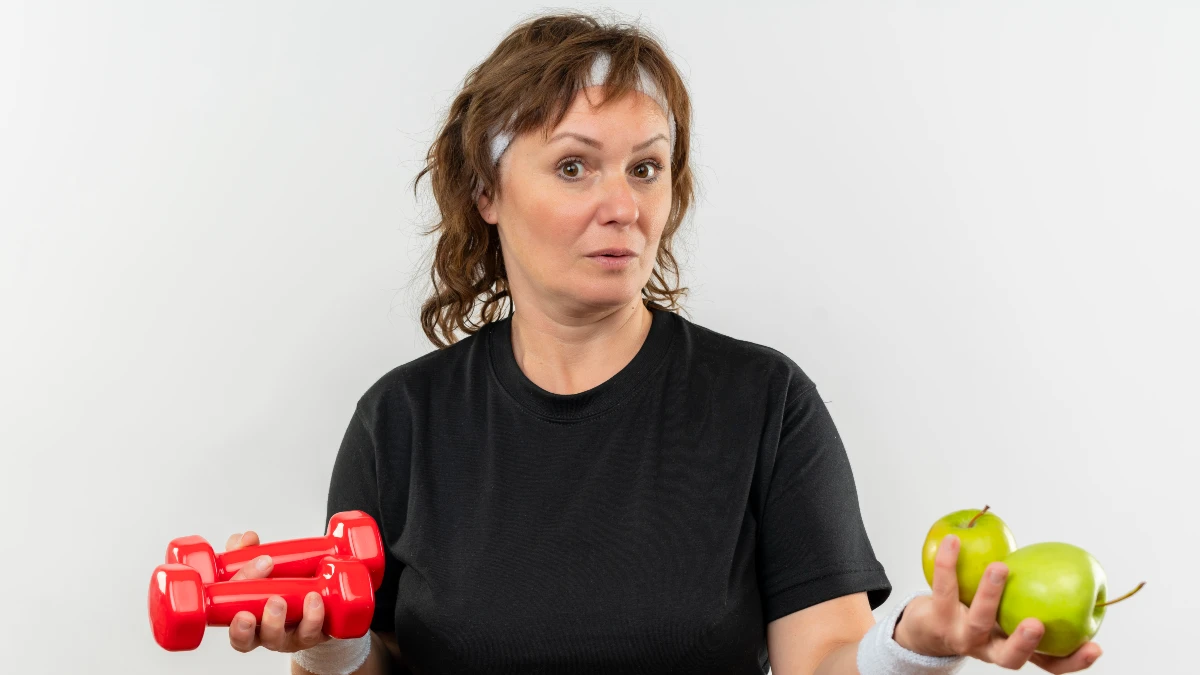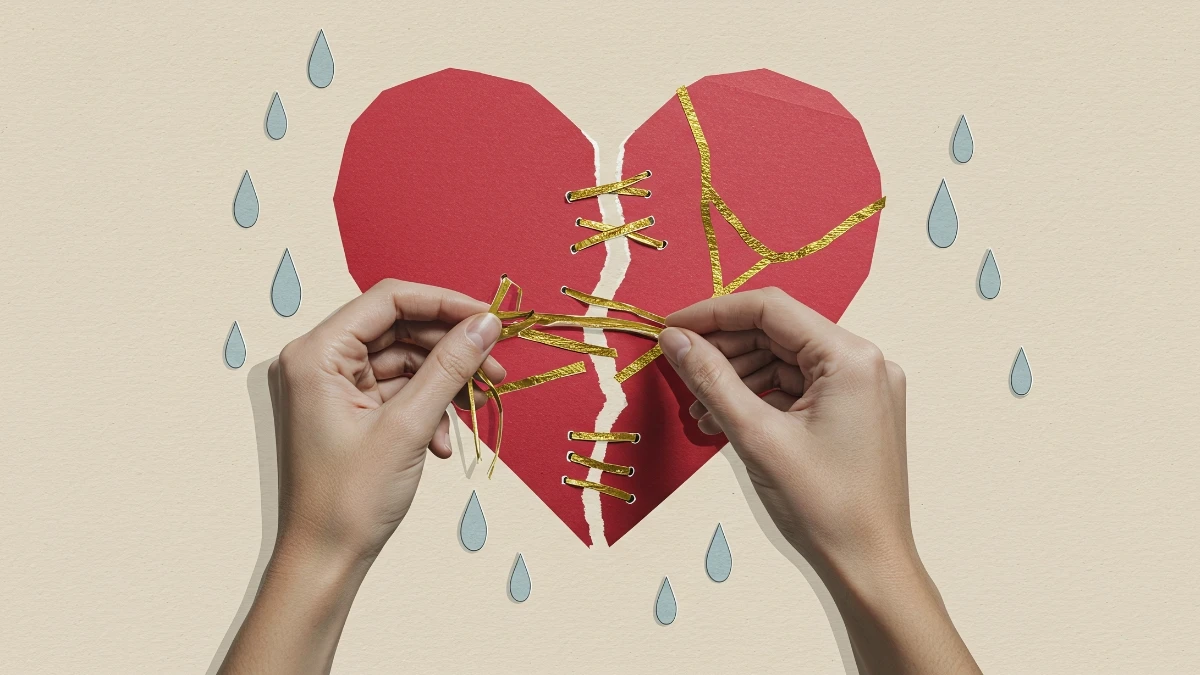You are losing muscle every year, and it starts sooner than you think. After age 30, your body begins a slow, silent process of shedding muscle mass and strength. This isn’t just about looking less toned; it’s about your future.
This gradual decline, called sarcopenia, is a direct threat to your independence, making simple tasks like carrying groceries or climbing stairs feel like a workout. But this decline is not inevitable.
Understanding what’s happening inside your body is the first step to taking control and building a stronger, more resilient future.
Rebuild Your Strength: A Guide to Beating Sarcopenia with Diet and Exercise

To combat age-related muscle loss, or sarcopenia, the most effective strategy is a consistent exercise regimen focused on resistance training. This approach directly builds and maintains muscle mass and should be performed at least two to three times per week.
Targeting all major muscle groups with weights, resistance bands, or bodyweight exercises. This core routine should be complemented by aerobic activities like walking or swimming for cardiovascular health.
As well as balance and flexibility training, such as yoga or tai chi, to improve stability and reduce the risk of falls. Starting slowly, progressing gradually, and finding ways to stay active daily are all crucial for success.
This physical activity must be supported by a strategic nutritional and lifestyle approach. As the body ages, it requires more protein, so aim for 1.0 to 1.2 grams per kilogram of body weight.
Distributed evenly throughout the day (20-35 grams per meal) from sources like lean meat, fish, dairy, and legumes. This high-protein intake should be part of a nutrient-dense, heart-healthy diet rich in fruits, vegetables, and healthy fats.
Furthermore, prioritize 7-8 hours of quality sleep for muscle repair, stay well-hydrated. And consult with a doctor or registered dietitian before making significant changes to ensure a safe and personalized plan.
What Is Sarcopenia and Why Should You Care?
The Silent Threat: Understanding Sarcopenia’s Progression
Starting Age
Muscle loss can subtly begin as early as your 30s, often going unnoticed for years.
Decadal Loss
Amount of muscle mass typically lost per decade after age 30, accelerating past 60.
Prevalence in 80s
Up to half of individuals over 80 are affected by sarcopenia, impacting independence.
Why Sarcopenia Demands Your Attention
- It’s not just about aesthetics; sarcopenia is a critical health condition.
- Leads to decreased functional capacity, making everyday tasks challenging.
- Increases risk of falls, fractures, and hospitalizations.
- Contributes to reduced metabolic rate, potentially affecting weight management.
- Impacts overall quality of life and independence in later years.

As you get into your fifties and beyond, something is happening to your body. You might not notice it at first, but it’s a big deal. You are slowly losing muscle, strength, and the ability to do things easily.
Doctors have a name for this: sarcopenia. This isn’t just about how you look. It’s a real threat to your health, your ability to move, and your freedom. Knowing what’s happening is the first step to fighting back.
This muscle loss starts much earlier than you might think, sometimes in your 30s. After you turn 30, you can lose 3% to 8% of your muscle every ten years. That speed picks up after age 60.
This means you could be losing about 1% of your muscle every year. It’s a widespread problem. About 1 in 10 people between 60 and 70 have it. For people over 80, that number can be as high as 1 in 2.
Sarcopenia is sneaky because it happens so slowly. For years, your body can hide the fact that it’s getting weaker. You might feel fine in your late 40s or 50s, but the muscle is already starting to disappear.
This gives you a chance to do something about it before it becomes a problem. The real trouble often starts after 60. That’s when all the small losses add up, and simple things like climbing stairs, carrying groceries, or getting out of a chair become hard. The goal is to act now, long before you get to that point.
Why Your Muscles Are Disappearing
So, why does this happen? Getting older is the main reason. As your body ages, things change that make your muscles weaker. The nerve cells that tell your muscles to move start to decline.
Your hormones change, too. For example, many men over 65 have lower testosterone, which makes it harder to build muscle. Also, your body gets worse at using the protein you eat to build new muscle.
Getting older sets the stage, but your lifestyle can make things happen much faster. Not being active is one of the biggest problems. It speeds up how quickly you lose muscle. Not eating right is another issue. If you don’t get enough protein, your muscles don’t have the building blocks they need to stay strong.
This can lead to a dangerous mix called sarcopenic obesity. That’s when you lose muscle but gain fat at the same time. This is why the number on the bathroom scale can lie to you after age 45. Muscle weighs more than fat.
You could lose five pounds of muscle and gain five pounds of fat, and your weight would stay the same. You might think everything is fine, but your body is getting weaker and less healthy. You need to stop thinking about just losing weight and start thinking about building and keeping your muscle.
The Real Dangers of Losing Muscle
Losing muscle is a bigger deal than just feeling weak. It affects almost every part of your health and your life.
The first thing you’ll notice is that daily tasks get harder. Things that used to be easy become a struggle. This can make you lose your independence.
This weakness, along with losing the muscle fibers that help you react quickly, makes you more likely to fall. For an older person, a fall can change everything. It can lead to broken bones, a hospital stay, and a permanent loss of freedom.
Losing muscle also messes with your body’s health. Your muscles help control your blood sugar. When you lose muscle, your body can’t handle sugar as well. This increases your risk for insulin resistance and type 2 diabetes. Your muscles are a key part of how your body runs.
Losing them is linked to many bad health outcomes, like long-term inflammation, more hospital visits, and even a shorter life. Keeping your muscle isn’t just about being strong. It’s about staying healthy for a long, long time.
How to Fight Back: Your 2025 Strength Training Plan

The problem of muscle loss has many causes, but the best solution is simple and proven by science. Resistance training is the single best thing you can do to stop, slow down, or even reverse muscle loss.
Studies show that strength exercises help you build muscle no matter how old you are. In fact, older adults can sometimes see bigger improvements in strength than younger people. This shows it’s never too late to start.
Many people think that cardio exercises like walking or swimming are enough to keep muscle. These activities are great for your heart, but they don’t give your muscles the challenge they need to grow.
The key to building muscle is something called progressive overload. This just means you have to slowly ask your muscles to do more over time. To build muscle, you have to challenge it. That’s the big idea behind this action plan.
Your 2025 Action Plan: Workouts for Everyone
Beyond the Workout: Sarcopenia Insights
Muscle Mass Decline
After age 30, adults can lose 3-8% of their muscle mass per decade, a rate that accelerates after 60. Resistance training is crucial to mitigate this loss.
Strength & Function
Sarcopenia significantly impacts daily activities. Studies show that maintaining leg strength reduces the risk of falls by up to 30% in older adults.
Nutritional Synergies
Adequate protein intake (1.0-1.2 g/kg body weight/day) combined with resistance exercise amplifies muscle protein synthesis, essential for fighting sarcopenia.
Scientific Consensus
The European Working Group on Sarcopenia in Older People (EWGSOP) recommends a multi-component approach, emphasizing progressive resistance training.
“Exercise is not just about extending life, but about extending the quality of life, preserving independence and vitality well into our later years. Resistance training is our most potent weapon against muscle loss.”
This plan is made so anyone can start, make progress, and get stronger. Experts say you should do a full-body workout two or three times a week. Make sure to take a day off in between to let your body recover.
Warm-Up for Everyone
Before you start, get your body ready. Do 5 to 10 minutes of light cardio, like walking fast or riding a stationary bike. Then, do some dynamic stretches like arm circles, twisting your torso, and swinging your legs. This gets your blood flowing and helps prevent injuries.
Cool-Down for Everyone
After your workout, take 5 to 10 minutes to stretch. Hold each stretch for 20 to 30 seconds and don’t bounce. Stretch the big muscles you just worked, like your chest, back, and legs. This helps you stay flexible and helps your muscles recover.
The goal when you first start is not to lift the heaviest weights. The goal is to build a safe and steady habit. People often get scared of getting hurt or don’t know where to start. But using good form with light weights or even just your own body weight is very effective.
This makes it easier to get started and stick with it, which is what really matters. You don’t need a gym to fight muscle loss. You just need to challenge your muscles, and you can do that anywhere.
It’s important to know the difference between strength and power. Strength is how much force you can create. Power is how fast you can create that force. Power is what helps you catch yourself when you stumble and prevents a fall. As we age, we lose the muscle fibers that are responsible for these quick movements.
So, a good plan for older adults should include not just lifting heavy, but also doing exercises that train you to be fast and reactive. This is how you take the strength you build in the gym and use it to stay safe in the real world.
Eat This to Rebuild Your Muscles

Exercise tells your muscles to grow. Food gives them the building blocks to do it. For adults over 45, protein is the most important part of a muscle-building diet. It helps repair the tiny tears in your muscles from workouts and helps build new muscle.
But as you get older, your muscles don’t respond to protein as well as they used to. This means you need to eat more protein to get the same muscle-building effect as a younger person.
Because of this, the normal amount of protein that’s recommended is often not enough for people fighting muscle loss. Lots of research shows that a better goal is 1.0 to 1.5 grams of protein for every kilogram you weigh. For a 150-pound person, that’s about 68 to 102 grams of protein every day.
How to Eat Protein for the Best Results
Eating all your protein in one big meal isn’t the best way to do it. To keep your body in a muscle-building state, you should spread your protein out across the day. Try to eat 20 to 35 grams of good-quality protein at each of your main meals.
This tells your body to build muscle several times a day, instead of just once. This means every meal is a chance to get stronger.
There’s one part of protein that’s extra important: leucine. Leucine is an amino acid that acts like a light switch to turn on muscle building. Making sure each meal has enough leucine is key to getting the most out of your protein.
This is why the quality of your food matters. Twenty-five grams of protein from a processed food might not work as well as 25 grams from a whole food that’s full of leucine. If you eat a plant-based diet, you’ll need to be a little more careful to get enough leucine. You can combine foods like rice and beans or use a good plant-based protein powder.
| Your Leucine-Rich Grocery List |
| Food Source |
| Swiss Cheese |
| Chicken Breast |
| Salmon |
| Lean Beef (Top Sirloin) |
| Eggs |
| Greek Yogurt (Nonfat) |
| Cottage Cheese (1%) |
| Tofu (Firm) |
| Lentils |
| Whey Protein Isolate |
| Note: Values are approximate and can vary by brand and preparation. |
Sample High-Protein Meal Plan for One Day
This sample day shows you how to hit your protein goals with foods that are rich in leucine.
Breakfast (approx. 30g protein): 3-egg omelet with spinach and 1 oz of cheddar cheese, with one slice of whole-wheat toast.
Lunch (approx. 35g protein): A big salad with mixed greens, 4 oz of grilled chicken breast, chickpeas, and a light dressing.
Dinner (approx. 30g protein): 4 oz of baked salmon with 1 cup of roasted broccoli and 1/2 cup of quinoa.
Optional Snack (approx. 20g protein): 1 cup of nonfat Greek yogurt or a protein shake. This is especially good after a workout.
Don’t Forget Sleep: The Secret to Muscle Growth

All your hard work in the gym and kitchen can be wasted if you don’t get enough sleep. Sleep isn’t just downtime. It’s when your body actively repairs your muscles, balances your hormones, and recharges. Good sleep makes your training and nutrition work even better.
How Sleep Builds Muscle
During deep sleep, your body releases a lot of human Growth Hormone (GH). This hormone is key for repairing the tiny tears in your muscles from exercise, which is how they grow stronger. The link between sleep and muscle is clear.
One study of adults over 65 found that the people who slept well had much more muscle than those who slept poorly. Another study found a strong link between bad sleep and lower muscle mass, especially in men.
How Bad Sleep Destroys Muscle
Not getting enough sleep creates an environment in your body that breaks down muscle. The hormonal changes are quick and bad. Just one night of no sleep can raise your stress hormone, cortisol, by 21%. At the same time, it can lower your muscle-building hormone, testosterone, by 24%. This hormonal shift works directly against your muscles.
That same study found another shocking result: one night of no sleep cut the rate of muscle protein synthesis by 18%. This means that even if you eat perfectly and work out hard, not sleeping enough can stop your body from using protein to rebuild muscle.
This can start a bad cycle. Poor sleep leads to muscle loss, and some studies show that having less muscle can mess up your sleep. Getting better sleep can create a good cycle, where better sleep helps you gain muscle, and having more muscle improves your health and helps you sleep even better.
How to Get Better Sleep in 2025
Keep a Regular Schedule: Try to get 7 to 9 hours of sleep a night. Go to bed and wake up around the same time every day, even on weekends. This helps set your body’s internal clock.
Make Your Room a Cave: Your bedroom should be dark, cool (around 65°F or 18°C), and quiet. Use blackout curtains, an eye mask, or a white noise machine if you need to.
Turn Off Screens: The blue light from phones, tablets, and computers stops your body from making melatonin, the hormone that tells you it’s time to sleep. Put away all screens at least an hour before bed.
Be Smart About Exercise: Working out regularly helps you sleep better. But for some people, a very hard workout too close to bedtime can make it hard to fall asleep. If that’s you, do your intense workouts earlier in the day.
Helpful Apps to Keep You on Track in 2025

Starting a new fitness plan is one thing. Sticking with it is another. Luckily, technology can help. In 2025, there are great tools to help you get past the common problems that make people quit: not knowing what to do, not having a plan, and feeling overwhelmed by tracking everything. The right app can be like having a coach and nutritionist in your pocket.
Top Apps for People Over 45
The best app is one that solves a problem for you and makes it easier to make good choices.
For Guided Workouts That Are Right for You:
SilverSneakers GO: If your health plan includes it, this is a great app. It’s made for older adults, so you know the workouts are safe and appropriate. You can change the programs to fit your fitness level.
Better5: This app is made for people over 50. It has short, low-impact workouts you can do without any equipment. It’s perfect if you think you don’t have time or a place to work out.
For a Personal Coach and Help with Form:
Future: If you’re ready to invest in your health, this app gives you a real personal coach. They make custom workouts for you based on your goals and what equipment you have. They also give you feedback on your form. This is great if you’re worried about getting hurt.
For Easy Nutrition Tracking:
MyFitnessPal: This is the most popular app for tracking what you eat. It has a huge database of foods and a barcode scanner that makes it easy to log your meals. This helps you make sure you’re hitting your protein goals.
For Building Good Habits:
FitOn: This app has a huge library of free workouts, including low-impact and stretching classes. It’s a great way to start without spending any money. You can try different things and find what you like.
Conclusion
Losing muscle as you get older is normal. But you don’t have to accept getting weak and frail. The science is clear: you can fight back and even reverse muscle loss with the right actions.
The slow decline of muscle that starts in your 30s and 40s doesn’t have to end with you being unable to live your life fully in your 60s and 70s.
You don’t have to change your whole life overnight. Start with small steps. Pick one exercise from the beginner plan to try today. Add one high-protein food to your next meal.
By taking charge of these things, you can fight muscle loss, keep your energy, and build a stronger body for the years ahead. Your stronger future starts now.


